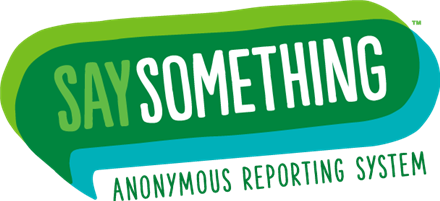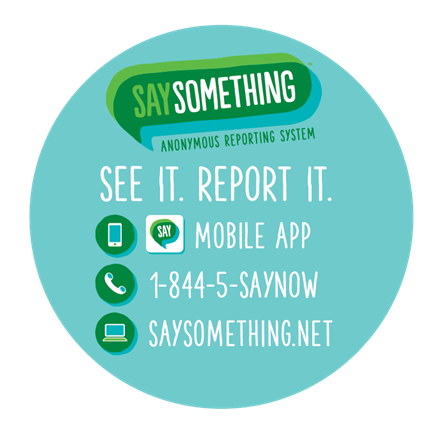- Houston Independent School District
- Say Something Anonymous Reporting System
Social and Emotional Learning
Page Navigation

Say Something Anonymous Reporting System
-
SAY SOMETHING PROGRAM DETAILS
Say Something is designed to be delivered in an in-person presentation or digital format for students in grades 6 through 12. During this 30- to 45-minute training, they’ll learn to look for warning signs and threats – especially on social media – of someone at risk of hurting themselves or others. What’s more, they’ll become empowered to “say something” before a tragedy can occur.
This program reinforces three steps:
1. Recognize warning signs and threats: Learn about different types of warning signs or threats and where you are likely to find them, especially on social media.
2. Act immediately; take it seriously: Understand strategies to take action and overcome potential barriers to being an “upstander” rather than a “bystander.”
3. Say something: Learn how to intervene when you see warning signs and threats by telling a trusted adult (and know who those trusted adults are that you can go to for help), call 911, or use an anonymous reporting system.
Who should participate? HISD 6-12 Grade Students
Who will benefit? Say Something benefits students in grades 6-12 as well as educators and parents who work to build a safe culture in their community. By building a culture of “looking out for one another” and reporting possible threats of violence when someone sees, reads or hears something (especially on social media), entire communities will become safer and lives will be saved.
What will we learn? Say Something informs and educates about observable warning signs (written, spoken, photographed, in video) that often exist in behaviors that could lead to someone hurting themselves or others. It also teaches individuals how to safely report on warning signs and potential threats. Additionally, the program provides tools to help promote and reinforce the Say Something training.
How will students be trained? Say Something is delivered using one of two options: a 30-minute plug-and-play student training video or a do-it-yourself presentation. For both options, educator guides and supporting materials are provided.

Contact
- 1.
- Kevin Jackson
- Kevin.Jackson@houstonisd.org

